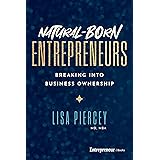Navigating professional environments often presents unique challenges. Many individuals find themselves intimidated by the prospect of attending networking events. The thought of initiating and sustaining meaningful networking conversations can be daunting. Thankfully, strategies exist to simplify these interactions. The quick tip presented in the video above introduces a highly effective method. It is a simple acronym designed to guide your discussions. This framework aims to transform awkward silences into engaging dialogues. Understanding this approach can significantly boost your confidence. It helps you build valuable connections with greater ease.
This article will delve deeper into the system mentioned. It expands on the practical applications of this memorable acronym. Insights are provided for each stage of the conversation. These tools are invaluable for professional development. They are particularly useful for those seeking career advice. Mastery of these techniques can redefine your approach to corporate gatherings. Your next industry event will feel less like a hurdle. It becomes more like an opportunity for connection.
Simplifying Networking Conversations with PAGE
The core concept shared in the video is the PAGE acronym. This mnemonic device stands for Place, Activity, Goal, and Exit. It offers a structured way to manage interactions. This method provides conversation starters. It also suggests pathways to deeper discussion. A common challenge at networking events is knowing what to say. People often struggle to move beyond superficial greetings. The PAGE framework helps individuals overcome this hurdle. It encourages more thoughtful and purposeful engagement.
Imagine if every interaction felt less like an interrogation. Instead, it feels more like a natural exchange. The PAGE method supports this ideal. It is a practical guide for professionals. This tool allows for smoother small talk transitions. It also aids in identifying shared interests. This system can be applied in various professional settings. Whether it is a large conference or a smaller meetup, it works. The acronym acts as a mental checklist. It ensures a comprehensive and polite interaction.
Place: Starting with Your Surroundings
Beginning a networking conversation can be simple. Look for common ground in your immediate environment. The ‘P’ in PAGE stands for Place. It encourages observation of your surroundings. Questions about the venue or location are excellent icebreakers. People are often more comfortable discussing neutral topics. For instance, “Have you attended this conference in this city before?” could be asked. Or, “What are your thoughts on the hotel’s amenities?” Such inquiries open dialogue. They require minimal personal disclosure initially.
This approach establishes a comfortable starting point. It allows both parties to ease into the interaction. Imagine striking up a chat about the city’s unique architecture. Or, perhaps commenting on the conference center’s impressive scale. These topics are universal to attendees. They provide a low-pressure entry into the discussion. This initial connection is often followed by broader topics. It sets a positive tone for the entire exchange. A connection is built on shared experience.
Activity: Engaging with the Event Itself
Once the “Place” is established, pivot to the “Activity.” This represents the ‘A’ in the PAGE acronym. Inquire about the event’s various components. People often attend networking events for specific sessions. They might be interested in keynotes or workshops. Asking about these aspects shows genuine interest. For example, “Did you catch the CEO’s keynote this morning?” is a good question. Or, “Are you planning to attend the AI breakout session later?” Such questions prompt sharing. They can reveal professional interests.
This stage of the conversation is crucial. It moves beyond generalities. It taps into the specific reasons for attending. Imagine discovering a shared passion for a particular industry trend. This might be found through discussing a relevant panel. Common ground is found in shared experiences. This strengthens the nascent professional relationship. It offers a natural progression to more specific dialogue. This shared engagement builds camaraderie. It makes the conversation more memorable.
Goal: Uncovering Intentions and Opportunities
The ‘G’ in PAGE signifies Goal. This stage involves discovering individual objectives. Every attendee at networking events has a reason for being there. Some seek new business connections. Others aim for professional development. Some might be exploring new technologies. Asking “What goals do you have for this week?” is effective. Or, “Are you hoping to find solutions for a particular challenge?” These questions encourage deeper sharing. They reveal potential areas for collaboration.
This is where true professional networking truly begins. It shifts from small talk to substantive discussion. Imagine learning that someone is scouting for a new CRM system. If you offer such solutions, a valuable lead is identified. Even if not, you might suggest someone who can help. This provides tangible value to the interaction. It moves beyond mere pleasantries. It fosters mutually beneficial connections.
Exit: Concluding with Grace and Purpose
Finally, the ‘E’ stands for Exit. Knowing how to gracefully conclude a networking conversation is vital. An abrupt departure can feel rude. Lingering too long can become awkward. Expressing gratitude is always appropriate. Phrases like “It was a pleasure meeting you” work well. Providing a brief reason for leaving can also ease the transition. For example, “I must find my colleague now” is a polite excuse. Or, “I need to check out the next session.”
The goal is to leave a positive lasting impression. This ensures the door remains open for future interaction. Imagine offering to connect on LinkedIn before parting ways. This solidifies the connection made. It provides a clear next step. A graceful exit ensures respect is maintained. It reinforces the professional courtesy. This final step is crucial for effective professional networking. It enhances the overall experience.
Applying PAGE in Various Networking Scenarios
The PAGE framework is versatile. It can be adapted to many professional settings. From industry conferences to casual business mixers, it fits. Its simplicity makes it easy to remember under pressure. This tool is invaluable for those with social anxiety. It provides a clear roadmap for interaction. Individuals are empowered to take control of their conversations. Awkward silences can be effectively minimized.
Consider a large virtual networking event. The principles still apply. ‘Place’ might become the virtual platform’s interface. ‘Activity’ could refer to specific breakout rooms. ‘Goal’ remains the same: understanding why someone is there. ‘Exit’ involves a polite sign-off from the call or chat. The core objective is always to foster connections. The PAGE method supports this, regardless of the format. It makes every professional encounter more productive.









